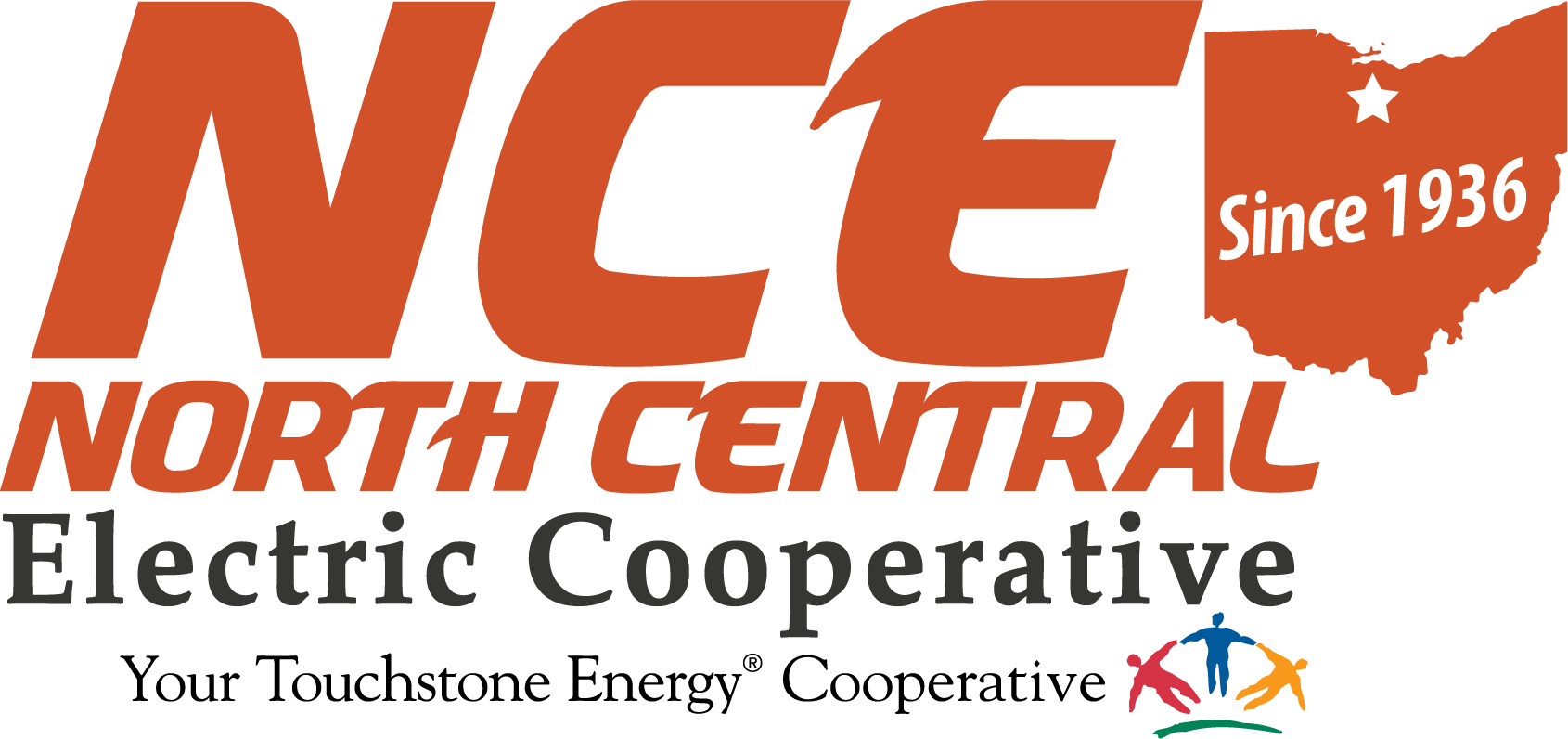North Central Electric Cooperative, Inc. is an electric distribution cooperative serving the needs of about 9,600 members in Crawford, Hancock, Huron, Richland, Sandusky, Seneca, Wood and Wyandot counties in north central Ohio. We maintain about 1,800 miles of underground and overhead lines as well as 12 substations and one metering point. Incorporated in 1936, North Central Electric has been serving the area for over 80 years.
A not-for-profit electric cooperative, North Central Electric is owned and controlled by the members we serve. Members voice their opinions on the operation and control of the cooperative through their elected board of trustees.
North Central Electric is one of 25 Ohio electric cooperatives. Together, we own and operate a generation and transmission cooperative called Buckeye Power, Inc. Buckeye Power owns two of the three generating units at the Cardinal Generating Station located on the Ohio River near Steubenville, OH. The two coal-fired units provide electricity to all the cooperative members in Ohio. Learn more about Buckeye Power and their energy portfolio.
We are a proud Touchstone Energy Cooperative, an alliance of more than 750 electric cooperatives across the nation meeting service excellence standards. Touchstone Energy Cooperatives pledge to operate with integrity, accountability, innovation and a spirit of community awareness. Learn more about Touchstone Energy.
Our History
Nationally
In the 1930's, electricity was a common luxury as long as you lived in the city. The power companies of these times were willing to provide power to cities, but taking their power and providing it to rural America with little or no profit for the companies was unrealistic; rural America was left in the dark.
Many of the conveniences available to American cities at the time was unknown to rural America. Wood and coal stoves were used to heat homes, water and food. Lighting for the family was often provided by kerosene lamps and candles. Everything from milking cows, pumping water and washing clothes was all done by hand.
In the city, labor saving devices were greatly improving the quality of life. Because there was no electric service to those living in rural areas, electricity was becoming the great divide among those living in the city and those in rural areas.
Farmers wanted electricity, however privately owned power companies said serving rural areas would be too costly due to the homesteads being so far apart. They also believed that farmers would not use much electricity. With no profits to be made, rural America remained without electricity until the late 1930's.
Under President Franklin D. Roosevelt, the Rural Electrification Administration (REA) was formed. The 1935 administration was formed to administer a program to encourage rural electrification by lending low-interest money to any group or company that would undertake the task. Even with the offer of low-interest financing, almost all the private electric companies chose not to get involved.
Due to the low interest of private companies, farmers took it upon themselves to get their own electricity and decided to form cooperatives to do the job themselves.
Locally
On April 13, 1936, a group of Rural Electrification Association Committeemen from Hancock, Seneca, Wood and Wyandot counties met in Upper Sandusky, OH. Upon a motion made by Mr. Lewis Baldosser and a second by Mr. Paul O. Crum, the group voted to incorporate. Mr. L.B. Keller moved and Mr. Glenn Diller seconded that the name of the association be the North Central Farm Bureau Electric Cooperative -- now known as North Central Electric Cooperative. The motion passed unanimously.
Construction began in August 1937 and the first few miles of line were energized in March 1938. These few miles of line were able to provide electricity to a handful of member-owners. Since then, the cooperative has grown and its membership has become quite diverse.
In January 1998, North Central Electric formed a cooperative shared services and management federation with Lorain-Medina Rural Electric Cooperative of Wellington, OH. Under the federation, the cooperatives share corporate management staffs, accounting, billing, engineering, purchasing and marketing departments. Both cooperative's maintain separate offices and separate line crews.
